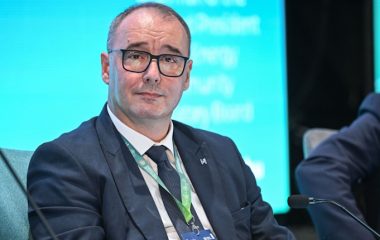
Photo: ISWA
By Antonis Mavropoulos, ISWA President and Gunilla Carlsson, chair of ISWA Working Group on Communication and Social Issues, originally published on ISWA website
Roughly 6 months ago, during discussions in several conferences and ISWA’s meetings, we came to a simple but important conclusion. The best way to advance the new UN Sustainable Development Agenda that has been adopted by 193 countries is to resolve the waste management problems that do exist in the developing world! So, we decided to work more on that argument. We presented some first ideas in the Roadmap Report, and today I am happy to present our new video that visualizes ISWA’s contribution to achieve the 17 Sustainable Development Goals (SDGs) identified by the UN Agenda.
This is a blog post written by Gunilla Carlsson, chair of ISWA’s Working Group on Communication and Social Issues. Gunilla undertook the task to demonstrate ISWA’s contribution to SDGs. She worked in close cooperation with Jiao Tang, the Head of ISWA’s Technical Cooperation Department. Enjoy Gunilla’s post.
“On September 25th 2015, the world leaders, in an historic UN Summit, approved the 2030 Sustainable Development Agenda that aims to end poverty, protect the planet, and ensure prosperity for all. This agenda involves a set of 17 Sustainable Development Goals, and each goal has specific targets to be achieved over the next 15 years.
Before summer, I was asked by in that time “the ISWA President-to-be” Antonis Mavropoulos, to look into how ISWA could visualize its contributions to SDGs. The SDGs are a universal set of goals, targets and indicators that UN member states are expected to use to frame their agendas and policies. In the next 15 years, countries will mobilize efforts to end all forms of poverty, fight inequalities and tackle climate change, while ensuring that no one is left behind. That’s not an easy piece of work!
It’s not either an easy piece of work to visualize such a complex set of goals and work carried out by so many people in so many places on earth in a format that really gains peoples interest.
The first step was to collect information about what goals and targets were of highest priority for ISWA. The next step was to match the targets to on-going or recently closed ISWA activities. The ISWA General Secretariat’s support was extremely helpful in identifying the targets suitable for a sound sustainable waste management and match those targets with the activities. The third step was to find suitable overarching statistics. When this was done – everything was put together in a form easy to interpret.
I’m convinced that ISWA’s vision “to create a world where no waste exists” can be a reality sometimes in the future. As the waste sector can reduce greenhouse gas emissions with up to 15-20 percent, we do have a great impact and should work in a wise way to achieve it. Together with other organizations ISWA can really be a player when it comes to create results.
One powerful and really difficult activity within ISWA at this time is to close down and transform dumpsites. This activity is not about waste – it’s about people! Another activity is to “turn off the tap” of waste ending up in the oceans. These actions will for sure relate to the SDG’s in so many ways.
To transform our world, everyone needs to take the first step!


















Be the first one to comment on this article.